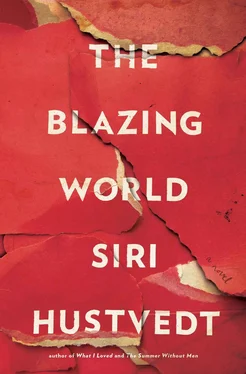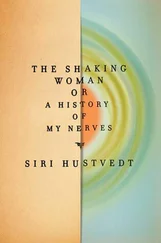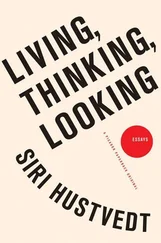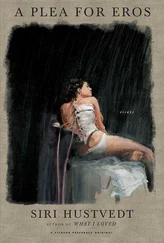Studies on change blindness (subjects missing blatant alterations in their visual field) and inattentional blindness (subjects who fail to notice an intrusive presence when attending to a task) suggest that, at the very least, there is much around us that we simply do not perceive. The role of learning in perception has also been crucial to understanding predictive visual schemas, which lend some support to constructionist theories of perception.I Most of the time we see what we expect to see; it is the surprise of novelty that forces us to adjust those schemas. Blindsight studies and masking studies have further illustrated how unconscious perceptions can and do shape our attitudes, thoughts, and emotions.II Burden appears to have closely followed the debates on perception and taken inspiration from various writers and researchers, some of whose papers have appeared in The Open Eye . On the second page of her letter, she asks what happens when a person looks at a work of art and produces the following sober formulations:
“I” and “you” hide in “it.” In this view, subject and object cannot be easily separated.
If we had no past visual experiences, we could not make sense of the visible world. Without repetition, the seen world is nonsense.
Every visible object is an emotional object. It attracts or repels. If it does neither, the thing cannot last in the mind, and it has no meaning. Emotionally charged objects stay alive in memory.
But the subliminal forces of an invisible underground also exercise a pull on us. More often than not, we do not know why we feel what we feel when we look at an art object.
In the letter, Harriet Burden claims responsibility for creating the works that appeared in three solo exhibitions in New York City: The History of Western Art by Anton Tish, The Suffocation Rooms by Phineas Q. Eldridge, and, most recently, Beneath by the artist known as Rune. Her articulated motive is simple: “I wanted to see how the reception of my art changed, depending on the persona of each mask.” She pointedly maintains that when she showed work under her own name in the past, few were interested, but her pseudonymous art, presented behind three “living male masks,” piqued the interest of both dealers and the public, albeit to varying degrees. Burden refers to this as the “masculine enhancement effect,” and she is quick to say that it affects women viewers as much as men:
The crowd is not divided by sex. The crowd is of one mind, and that mind is swayed and seduced by ideas. Here is a thing made by a woman. It stinks of sex. I smell it. All intellectual and artistic endeavors, even jokes, ironies, and parodies, fare better in the mind of the crowd when the crowd knows that somewhere behind the great work or great spoof it can locate a cock and a pair of balls (odorless, of course). The pecker and beanbags need not be real. Oh no, the mere idea that they exist will suffice to goad the crowd into greater appreciation. Hence, I resort to the mental codpiece. Hail Aristophanes! Hail the fictional rod, the magic wand that opens eyes onto unseen worlds.
Burden’s admittedly hyperbolic argument is that her retreat behind men not only eliminated antifemale bias but that maleness augments the value of intellectual work and art objects for the public, which she posits as a kind of undifferentiated collective mind — clearly a rhetorical exaggeration.III That bias exists, however, seems undeniable. An experiment designed with three female artists as well as the three male ones would have allowed a comparison between the two groups, but even under those circumstances, there are so many variables at work in the reception of any given artist’s creations that what Burden calls her “fairy tale constructed in three acts” may be ultimately elusive in terms of what it actually means . The New York art world can hardly be thought of as a laboratory of controlled circumstances. Furthermore, had the artworks been identical in each case, it would have been much easier to draw a conclusion from Burden’s experiment. There have, in fact, been many studies on the perception of race, gender, as well as age, most of which, but not all, reveal biases, often unconscious, and which vary from culture to culture.
Burden’s commentary on her second “fictional construct” or mask, Phineas Q. Eldridge, takes up the question of race and sexuality as essential factors in the perception of the exhibition she produced for him.
My two white boys, sleeping with the Other, as far as we know, anyway, are creatures without impediments to the bursting fullness of their particular characters. In other words, they have no identity. An oxymoron? No. Their freedom lies precisely in this: They cannot be defined by what they are not —not men, not straight, not white. And in this absence of circumscribed being, they are allowed to flourish in all their specificity. He picks his nose. He’s a dullard, a genius. He sings off-key. He reads Merleau-Ponty. His work will live in posterity. The art I made for them, for Tish and Rune, exists here and now without a single crippling adjective. But my Phinny mask, gay and black or black and gay, which hides my long white womanly face, pinches hard.
The presence of a hermaphrodite figure in Burden’s second show, The Suffocation Rooms , seems to have precipitated the reactions of reviewers, creating what she calls “the blindness of context,” a radical externalization and reduction of a person’s identity to stable and thus limiting categories of marginality. Burden duly credits her feminist sources — Simone de Beauvoir, Anne Fausto-Sterling, Judith Butler, Toril Moi, Elizabeth Wilson among them. Burden insists on ambiguity as a philosophical position, and furiously denies hard binary oppositions, even on the biological level of human sexuality, a view which, frankly, situates her as an extremist, one alien to my own position.IV
The letter takes a further turn into theories of self. Again, Burden seems to be aware of the philosophical and scientific debates on the nature of the self, and her letter escorts the reader on a convoluted path from Homer to the Stoics to Vico, leaping forward to W. T. H. Myers’s subliminal self, to Janet, Freud, and James, to Edmund Husserl’s phenomenology of time consciousness and intersubjectivity and then to contemporary infant research, as well as neuroscience findings about primordial selves, and locationist hypotheses which focus on the hypothalamus and periaqueductal gray areas of the brain, as well as a Finnish scholar, Pauli Pylkkö, who advances a notion of “aconceptual mind,” and an obscure novelist and essayist, Siri Hustvedt, whose position Burden calls “a moving target.” As far as I can tell, Burden attempts to undermine all conceptual borders, which, I believe, define human experience itself. I cannot say that her wild romp into the more peculiar aspects of continental philosophy convinced me. The woman flirts with the irrational.V
That notwithstanding, the artist’s stated ambition is to dismantle conventional modes of vision, to insist on her “unfettered personas” as “a medium of flight.” She staunchly maintains that adopting the masks allowed her greater fluidity as an artist, an ability to locate herself elsewhere, to alter her gestures, and to live out “a liberating duplicity and ambiguity.” Each artist mask became for Burden a “poetized personality,” a visual elaboration of a “hermaphroditic self,” which cannot be said to belong to either her or to the mask, but to “a mingled reality created between them.”
This declaration is, of course, a purely subjective one, but then the arts are not about objectivity. Burden’s experiment might be better named a performance or performance narrative . She regards the three exhibitions as a trio that together comprise a single work called Maskings , which has a strong theatrical and narrative component because she insists that it includes the reviews, notices, ads, and commentary the shows have generated, which she refers to as “the proliferations.” The proliferations, of which this essay is presumably one, project Burden’s fictional, poetized personalities into the broader conversation about art and perception.
Читать дальше












